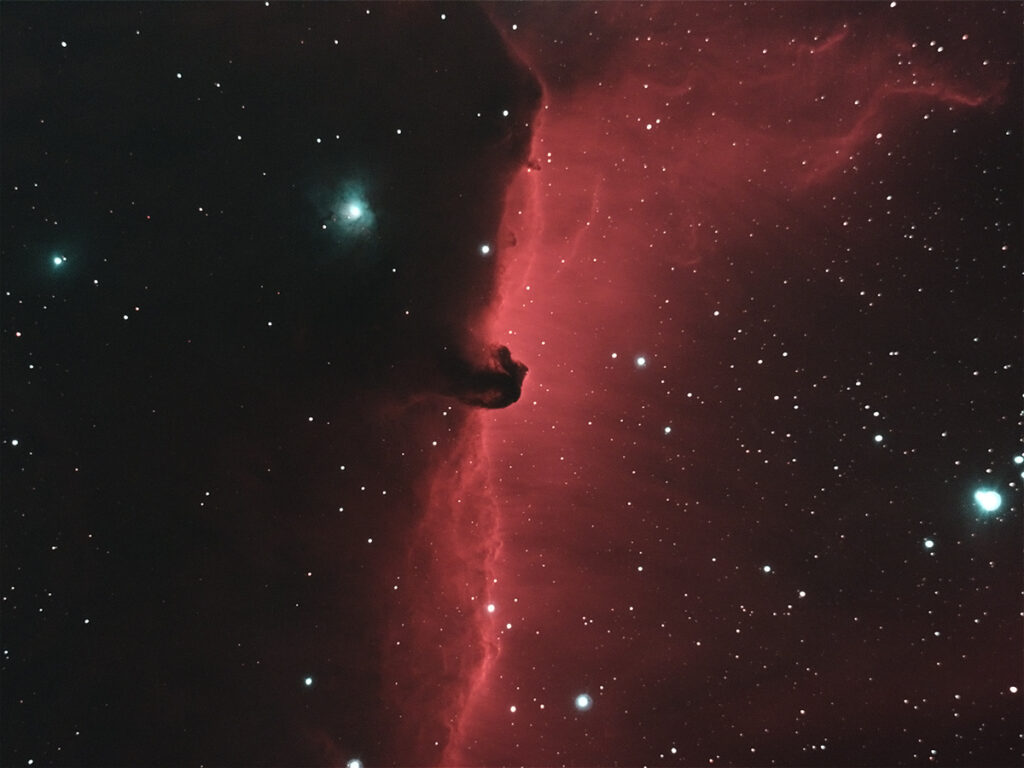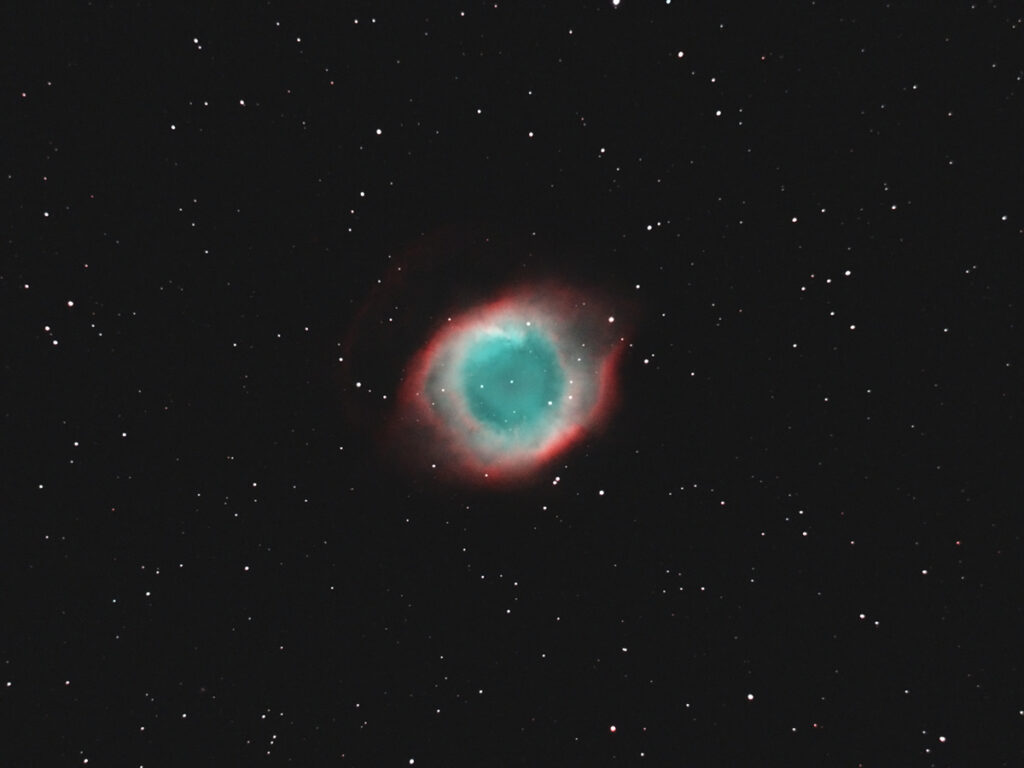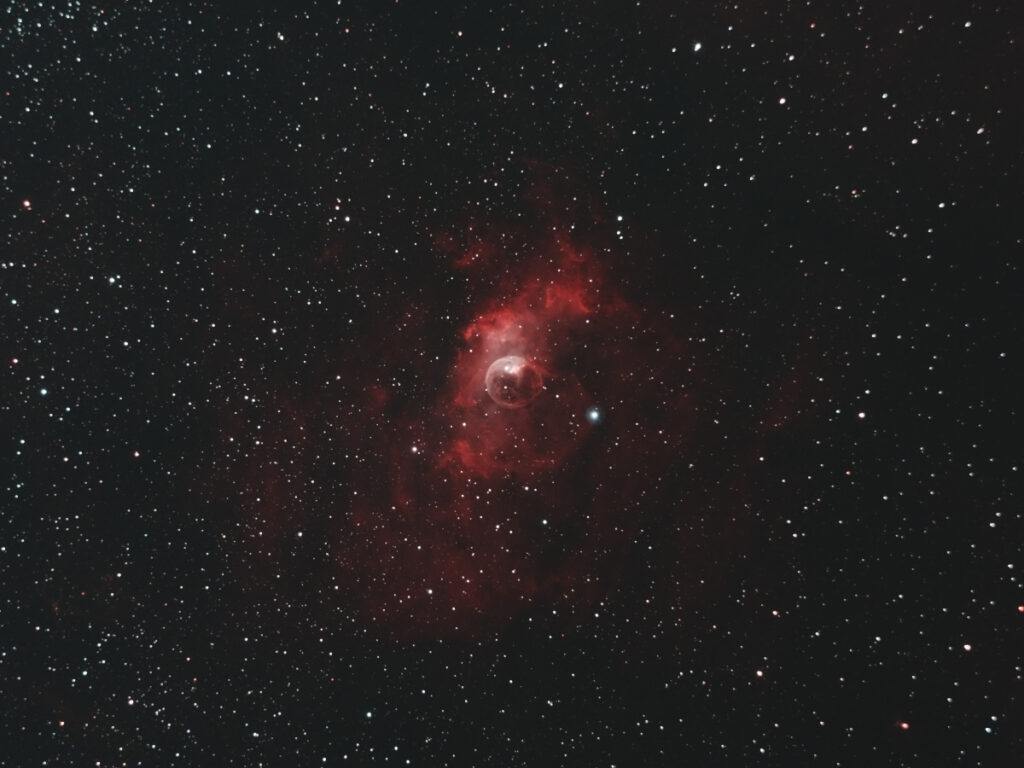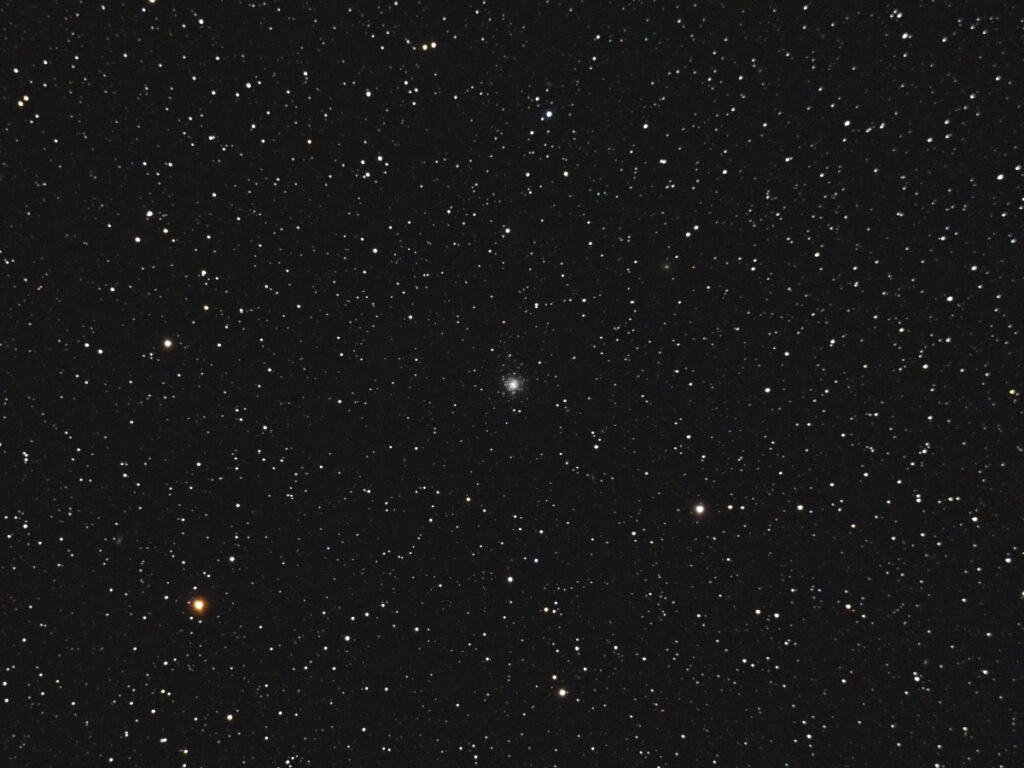
Telescope: Meade SN10 at f/4, Orion Atlas EQ-G
Camera: QHY 268c, Mode 0, Gain 30, Offset 30, -10C
Filter: 2” Radian Triad Ultra Hb, OIII, Ha, SII filter
Guide scope: Williams Optics 50mm, ASI290MM mini, PHD
Exposure: 32x300sec, saved as RAW16/FITS
Darks: 40×300 sec
Flats: 64×2 sec, tee shirt flats taken at dusk
Average Light Pollution: Red zone, fair transparency, moonlight
Lensed Sky Quality Meter: 18.4 mag/arc-sec^2
Stacking: Mean with a 1-sigma clip.
White Balance: Nebulosity Automatic
Software: SharpCap Pro, Nebulosity, Deep Sky Stacker, Photoshop
This is the iconic Horsehead Nebula in Orion. The Horsehead itself is the dark nebula, Barnard 33, silhouetted against the red emission nebula, IC 434. To the left is the blue reflection nebula NGC 2023. To the lower right is the beautiful Sigma Orionis multiple star system. It is interesting to note how the right side of this image shows an abundance of faint background stars while the left does not. This is due to an expanse of interstellar dust forming a veil blocking the light from the distant stars on the left side of this field. This is another excellent example of how well the Radian Triad Ultra cuts through challenging sky conditions. I have never seen the horsehead nebula visually from my backyard even with my 16.5” and I have only glimpsed it from our dark sky site.
IC 434 is located just south of the bright star Alnitak, the easternmost star in Orion’s belt, and rises due east around 11pm and is high in the south during the early morning.




Recent Comments